Tucson Arts Heroes
JDD Specialties completed another season of “Arts Heroes” for ON Media. Arts heroes are the backbone of the arts and culture communities in Phoenix and Tucson.
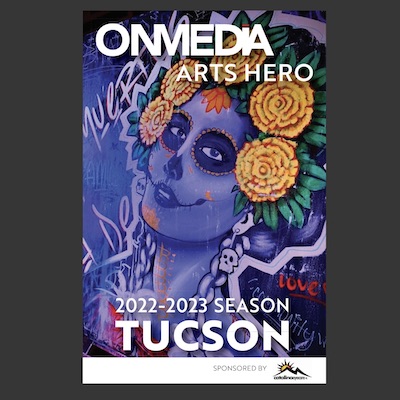
JDD Specialties completed another season of “Arts Heroes” for ON Media. Arts heroes are the backbone of the arts and culture communities in Phoenix and Tucson.
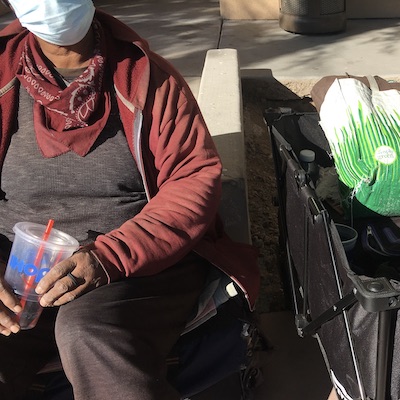
I met Gwen, my neighbor who is homeless, in March of 2020, just as the COVID-19 lockdown began. My gym was closed, and so I started taking long walks for my physical, mental and emotional health.
I passed Gwen many times when I walked on Central Avenue before we started to have conversations. I posted them on my JDD Specialities Facebook page as part of my #20/20 series.
I’m continuing that conversation in this blog. The posts are in reverse chronological order.
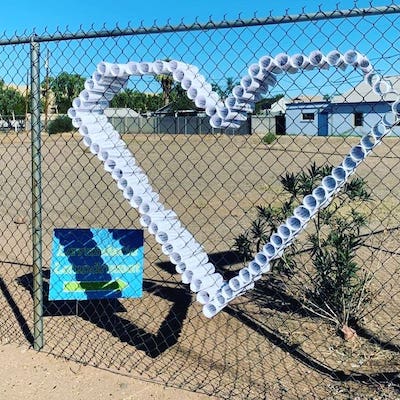
In 2021, Social Spin, a social-impact startup, established a nonprofit foundation to manage its charitable work and bought property at the northeast corner of 24th and Portland streets that will be the site of its major push into affordable housing development. LISC Phoenix appreciates the work.
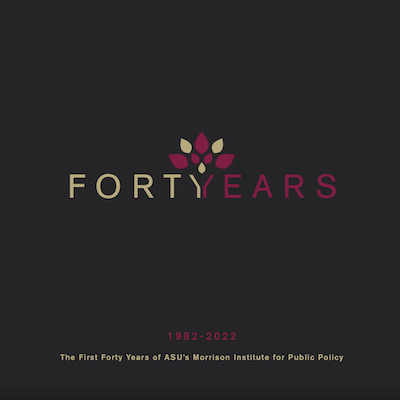
ASU Morrison Institute for Public Policy commissioned JDD Specialties LLC to write its 40-year history. The storytelling approach makes for fun, enlightening reading about the institute’s origins and survival.


State of Black Arizona continues its push to raise awareness about rare diseases with this white paper that explores and encourages better policies and practices that reduce possibilities of misdiagnosis and address the unacceptable consequences of delayed or denied access to care.

A feature article on Carolina Aranibar-Fernández explains how LISC Phoenix takes creative placemaking to next level with a new artist-in-residence position.
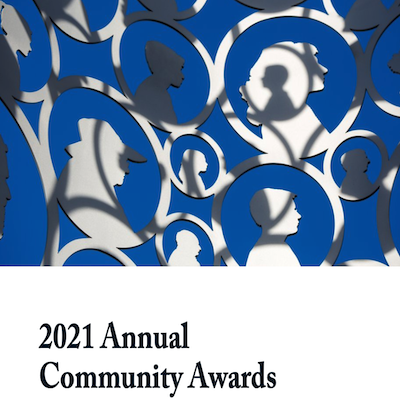
JDD Specialties continued an annual tradition of writing profiles of people and organizations that LISC Phoenix identifies as doing exemplary work in helping to build equitable communities. The 2021 honorees include:
UMOM’s Newsom Village, exemplary project: Newsom Village builds upon UMOM legacy of developing permanent affordable housing
Arouet Foundation’s Financial Opportunity Center, exemplary program development: Arouet Foundation rises to challenge of operating a LISC Financial Opportunity Center
Mesa Vice Mayor Jenn Duff, exemplary advocate: Jenn Duff’s continuous search for best ways for Mesa to develop starts with neighbors and local businesses
City Councilmember Robin Arredondo-Savage, exemplary advocate: Robin Arredondo-Savage brings small business, veteran background to Tempe community-development efforts
2020 Funds to Feed grantees and partners, exemplary community response: COVID-19-response Funds to Feed Grant inspired innovation, launched new era of grant-making
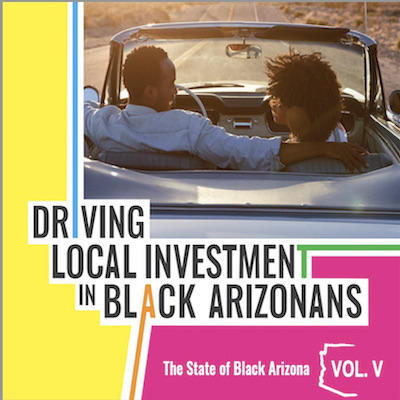
JDD Specialties provided editing, writing and consulting services to the State Black of Arizona for a series of reports released in 2021, including “Volume V: Driving Local Investment in Black Arizonans,” “Health and Well-Being of Black Girls and Women in Arizona” and the “State of Black Business.”
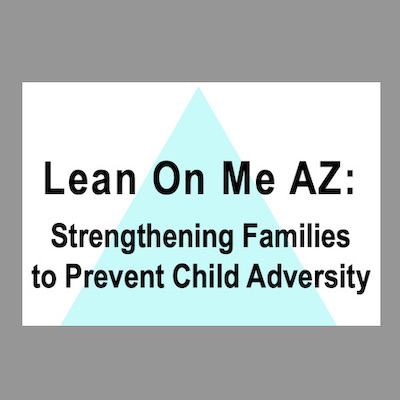
All families experience stress at some point. Knowing that family stress is a first sign of child abuse and neglect, Prevent Child Abuse Arizona in April 2021 issued a community call to action and toolkit. It’s an effort to raise awareness about the factors that protect families from overwhelming stress, and provide tips, tools, and messages to help community members strengthen families in everyday ways.
The toolkit was developed after a series of virtual listening sessions in 2020 with stakeholders in the child welfare system, including families who are in the system and who identified as being at risk of having contact with the system.
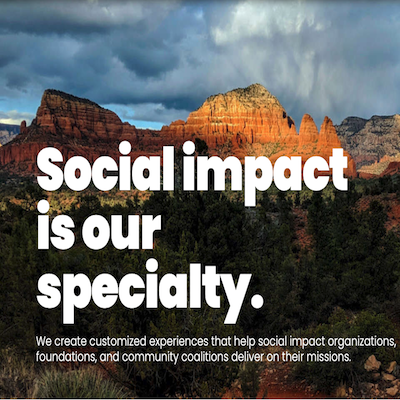
Beyond Strategy Consulting is a multidisciplinary professional practice that uses the art of collaboration to deliver results and strengthen communities. Founder Cassies Hilpman Breecher tapped JDD Specialties to help write content for a revamped BSC website. JDD Specialties is also part of Cassie’s team of collaborators.

How does the Phoenix community development garden grow? With innovations like the Funds to Feed grant administered by LISC Phoenix. Here’s how a city of Phoenix CARES Act story begins:
COVID-19’s devastating socioeconomic impact on underserved communities already struggling in food deserts required a crisis response with as many helping hands as possible doing the hard work of ensuring individuals and families avoid hunger.
Or maybe what it took was the community development version of a green thumb, a grower’s heart and a commitment to plow new ground in grant-making.
(Photo by Cihuapactli Collective)
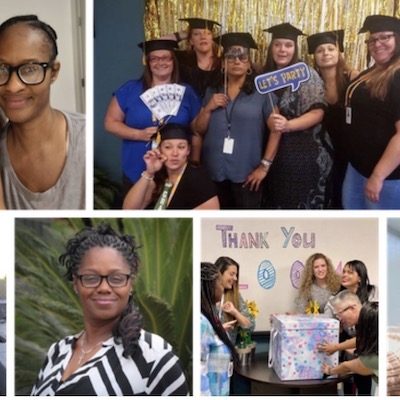
With the support of LISC Phoenix, the Arouet Foundation helps women newly released from Perryville Prison navigate complex systems that pose barriers and obstacles to their success. The Financial Opportunity Center, a special initiative of LISC, is a crucial part of Arouet’s support system to formerly incarcerated women.
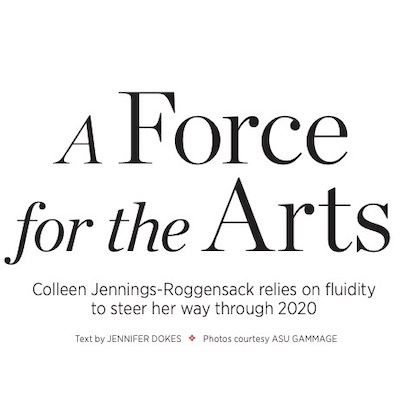
Colleen Jennings-Roggensack, ASU vice president of cultural affairs, is a force for the arts on the regional and national scenes. In 2020, her work centered on two pandemics: COVID-19 and racism. The Red Book Magazine featured her in its holiday issue.
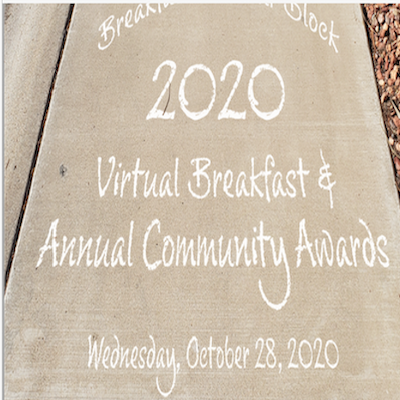
LISC Phoenix recognizes people or organizations that have helped it in its work to build equitable communities. JDD Specialties, as it has in years past, wrote profiles of the 2020 honorees.
Exemplary Collaborative, Arizona Home Matters Fund: “New Arizona affordable housing fund built on solid foundation of collaboration.”
Exemplary Project, Urban Living on Fillmore by Native American Connections: “Urban Living on Fillmore’s form follows Native American Connections’ functions.”
Exemplary Partner, U.S. Bank: “U.S. Bank COVID-19 relief funds follow a trail of trust, partnership to transit corridor microbusinesses.”

JDD Specialties is a consultant and writer for Virginia G. Piper Charitable Trust, one of the nation’s top-100 foundations. The trust awards annually about $23 million in grants to nonprofits in Maricopa County.
During the COVID-19 pandemic, JDD Specialties helped the trust communicate a multifaceted, rapid response of strategic emergency grants.
In August 2015, JDD Specialties helped the trust and the Arizona Commission on the Arts with a joint announcement about a three-year grant to launch the AZ Creative Aging initiative, which a national leader of the creative aging movement called “brilliant.”
JDD Specialties wrote the extended profile on Russ Perlich, the 2015 Piper Trust Encore Career Prize awardee and the brief profiles of 2016 Encore Prizes for Exceptional Organizations.
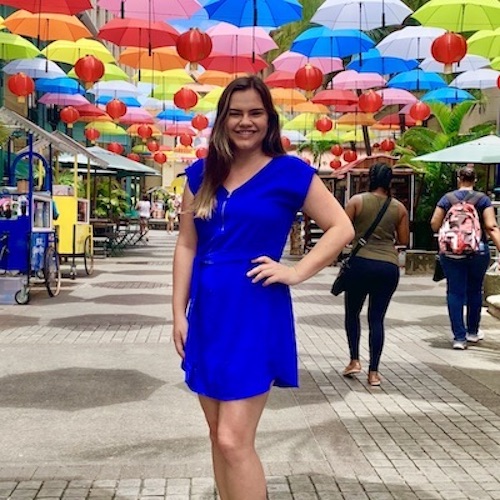
Bianca Buliga grew up thinking ‘business’ was a dirty word and that nothing good comes of its practice. Her early perceptions seemed diametrically opposed to her life goal of making positive, societal change. The 2017 graduate of the ASU Thunderbird School of Global Management knows better now. In April 2020, She was featured in the school’s Alumni Spotlight.
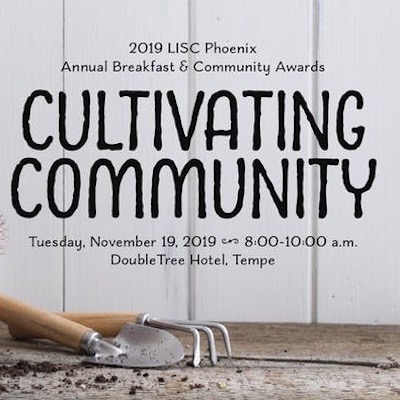
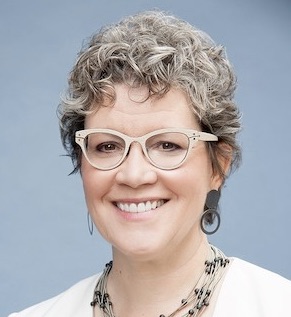
This wrap-up of a LISC Phoenix event that has become a major celebration of community development work in Arizona featured LISC COO Annie Donovan. The national expert in community development and impact investing, shared five things to focus on when addressing structural factors that create and perpetuate poverty in our communities.

This personality profile about Marlena Robbins is about how she puts all of herself into her work. And there is so much to the person that she is. She is an artist with a keen intellect and a biding respect for indigenous culture. (The article appeared in the holiday 2019 issue of The Red Book magazine.
(Photos by Tina Celle.)

The Red Book magazine wanted a profile on an artistic newcomer who has quickly made a name for herself in the Valley. She brought a lot with her in her move from Louisiana to Arizona.
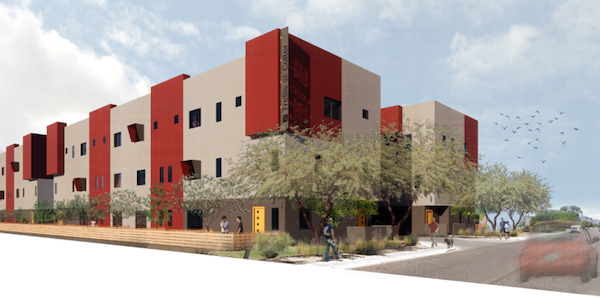
(Note: This article is part of “Communities on the Line,” a LISC Phoenix series on transit-oriented development in the Valley.)  A ¾-acre residential lot in the West Camelback Corridor is long past its prime as a single-family-home property. As fate and determination have it, that’s a very good thing for 20 future homeowners and a neighborhood experiencing revitalization spurred by light rail.
A ¾-acre residential lot in the West Camelback Corridor is long past its prime as a single-family-home property. As fate and determination have it, that’s a very good thing for 20 future homeowners and a neighborhood experiencing revitalization spurred by light rail.
Trellis broke ground in May on a townhouse development in central Phoenix at 1617 W. Colter St. Trellis @ Colter is a rare, unique new home ownership opportunity within the Valley Metro light-rail corridor where thousands of units of multifamily rental housing have sprung up along the 28-mile route in recent years, including projects underway to the south and west of the townhomes.
But for Trellis, which has a long history in single-family home lending and building, it didn’t make sense to put three or four small units on the lot near the 19th Avenue and Camelback Road light-rail station. Trellis delved into density options for home ownership because of the lot’s proximity to light rail, its central city location and because of all the commercial activity occurring on Camelback Road. Continue reading

Editor’s note: This article appeared first appeared in the ASU Thunderbird School of Global Management Knowledge Network e-newsletter.
Ask Solomon Frank about his typical workday after launching a start-up on a small tropical isle and he will talk about rolling out of a hammock for a day that includes fishing and swimming. Fishing is for sustenance; swimming is how he gets to work.
There is no checking email or seeing what the stock markets are doing because there is no Internet on the island. But pigs and chickens do get his and his co-workers’ daily attention; so do some food crops.
There’s also a cash crop to tend: seaweed. That’s where he gets down to the business of improving lives through economic development.

ASU Watts College of Public Service and Community Solutions assigned to me a project that made my heart sing. I wrote profiles of the six outstanding graduates for Spring semester 2019. Jennifer Harrison, Kelly Walsh, Josh Loescher, Aly Perkins, Katharine Leigh Brown and Joanna Williams are phenomenal students and exceptional human beings.

ON Media honored another season of Arts Heroes in Tucson. It’s always a pleasure to write profiles of the honorees. Soleste Lupu and Joey Rodgers, owners of Dancing in the Streets AZ, were among my favorites for the 2018-19 season. The husband-and-wife team teaches classical ballet in South Tucson.
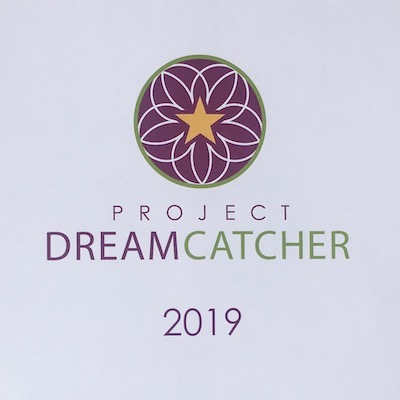
The third cohort of Native American businesswomen completed the Project DreamCatcher program in May 2019. Project DreamCatcher is funded by Freeport-McMoRan and implemented by the Thunderbird School of Global Management. The article about the program and its commencement ceremony was posted to the Thunderbird Knowledge Network website, which receives content support from Castelazo Content.
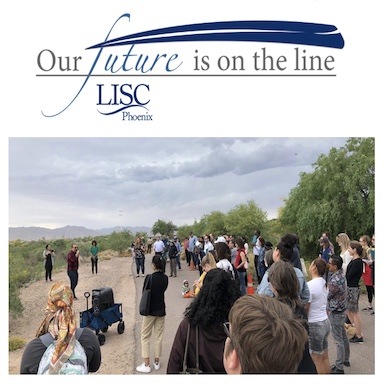
Editor’s note: This article was written for LISC Phoenix and is posted on its website.
On a recent spring day in south Phoenix, nature served up a chilly wind and some sprinkles of rain as a reminder of its power to affect how people feel. A few dozen desert dwellers who had gathered at the Rio Salado Recreation Area for a conversation about the socioeconomic importance of place shivered and tried to brace themselves.
It was an appropriate metaphor for a day of reflection about the powerful, unnatural force of displacement. It’s chilling. Community development institutions and organizers, in Phoenix and throughout the United States, are hunkering down in their fight against it.
Displacement is the forced movement of people from places where they have deep connection to the land and typically where there is cultural relevance. When it moves low-income households out of their neighborhoods to make way for housing that only higher-income renters and buyers can afford, displacement ushers in gentrification.
David Greenberg, national director of research for LISC, sees the need for well-organized counter movements to displacement, particularly in the area of affordable housing.
“Through organizing, it’s often possible to expand upon what we think might otherwise be possible to support the affordable housing movement more broadly and bring together people to policy to shape place,” Greenberg said.
Continue reading
LISC Phoenix and its community development partners sponsored a forum on anti-displacement strategies. I wrote the article that wrapped up the half-day session on April 16 and a tour later that at the Rio Salado Recreation Area in South Phoenix.
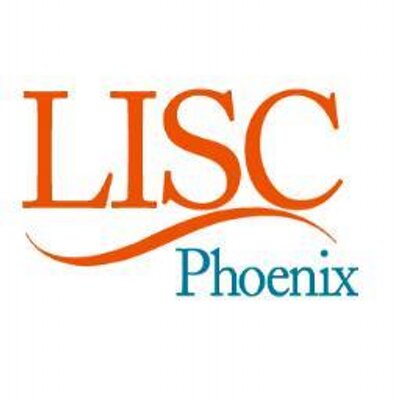
Editor’s note: Charles Marohn, founder and president of Strong Towns, shared thoughts about Phoenix-area development during a 2018 visit. This article was written for LISC Phoenix, one of the sponsors of Marohn’s visit.
“Cities have the capability of providing something for everybody, only because, and only when, they are created by everybody.” — Jane Jacobs, “The Death and Life of Great American Cities”
The definition of insanity, the adage goes, is doing the same thing over and over again but expecting different results. Charles Marohn, founder and president of Strong Towns, argues that current development patterns force people, especially those in the Southwest, to live some variation of Crazytown, USA.
The horizontal expansion development patterns we see today make life unnecessarily difficult for some residents and are not sustainable long-term, Marohn said. Cities and towns can’t afford the post-World War II, automobile-centric, sprawl development pattern seen coast to coast, he said.
“You’re in a dysfunctional system designed to do a dysfunctional thing over and over again,” Marohn said.
“Phoenix, the state of Arizona, a lot of the Southwest, is designed to grow in a very certain, specific way. … Not only is the landscape perfectly adapted to that, but the structures that we’ve created — socially, politically, culturally, economically — are perfectly aligned to do that,” he said.
Continue reading
A public-private partnership with layers of leveraged resources produced huge community impact in the form and function of Valor on Eighth, an affordable housing complex with a special focus on veterans.
This is part of the “Communities on the Line” series that I write for LISC Phoenix.
Honor, dignity and opportunity took up residence at Valor on Eighth when the Tempe apartment community designed and built for under-served veterans opened in January. Hope and determination have made themselves comfortable there, too.
With Valor, housing and veterans’ advocates scored a victory in the ongoing battle to create decent, affordable living environments for those who have served our country. Valor is the only affordable housing apartment community in Arizona that puts the needs of veterans with families front and center.
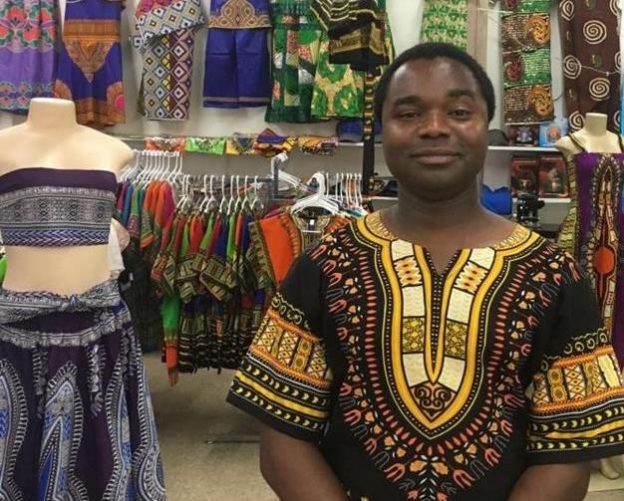
(Editor’s note: This article first appeared on the LISC Phoenix website.)
Perodin Bideri, a west Phoenix shop owner who was raised in refugee camps in Tanzania, and Christy Moore, a veteran Valley nonprofit executive who is on a mission to disrupt the landromat industry, are in the same boat.
Both are seeing things — opportunities, specifically. Both have a brand of ambition that’s engaging and inspiring; it invites participation.
And both are navigating waves of success that often come with access to capital made possible through a partnership with nonprofits LISC and Kiva, an online crowdfunding platform. For as little as $25, a lender can join a fund that allows borrowers to receive loans of up to $10,000.
Access to capital is a major hurdle for emerging small-business owners. They don’t qualify for credit from traditional lenders. If they do secure loans, they come with high interest rates and fees.
With a Kiva loan, borrowers pay zero interest and no fees. That got the attention of Bideri, owner of B&R African Styles.
“When I was introduced to Kiva, it was a great opportunity to open doors that grow my business,” Bideri said. “To get a loan with zero interest? I was in.”
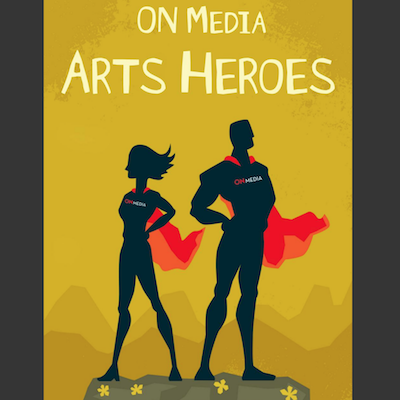
JDD Specialties wrote all profiles for the second annual ON Media Arts Heroes program. ON Media selected 17 arts heroes in Phoenix and southern Arizona. Their profiles appeared monthly in theater programs during the 2017-18 arts season.

Editor’s note: Miracle Mile on McDowell is the latest entry in the LISC Phoenix “Communities on the Line” series. Nearly seven decades ago, shop owners frustrated by the challenges of conducting business in downtown Phoenix went looking for the next big thing in local commerce. They found it on McDowell Road, which back then was on the outskirts of town. McDowell Road quickly became a mid-century commercially vibrant, pedestrian-friendly place to be. A stretch of east McDowell was so thick with business activity it became known as the “Miracle Mile.” Fortunes changed just as quickly for Miracle Mile. By the late 1950s, the hot spot was snuffed out by the next big thing — Park Central, Arizona’s first shopping mall. 
Decades of neglect and abandonment and policy decisions turned McDowell Road into a major route for commuters rather than a destination location or a place with goods and services for neighbors. McDowell Road is getting a second chance. In contemporary terms that signal next-big-thing status — revitalization, diversity, inclusion, small-business investment, creative placemaking, connected neighborhoods — the east McDowell Road commercial corridor from 7th Street to Highway 51 is heating up again. The area has amassed an array of ethnic restaurants and markets (Salvadoran, Ethiopian, Morrocan, Mexican) and is becoming a hub for immigrant and refugee entrepreneurship. Other small business also are finding success in the corridor.
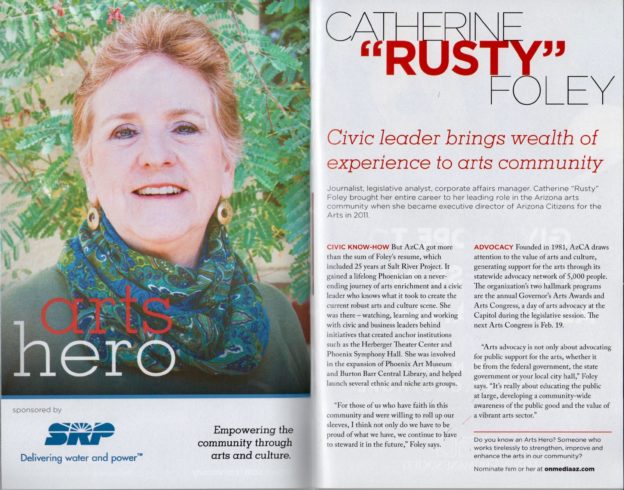
I’ve had the pleasure of interviewing nearly two dozen people in the Valley and southern Arizona for the On Media Publications Arts Hero project. It’s been a labor of love during the past few months because I’ve met some of the coolest people doing amazing, righteous things for our communities.
Most of the honorees are new to me. But Rusty Foley, the Phoenix Arts Hero for January, is very familiar. She built a legacy long before she put her talent and energy into Arizona Citizens for the Arts. I knew her first as a very good journalist and then as a community mover-shaker while at SRP.
You can call Rusty a hero. I call her a bad chick. Not many people hold that high status in my book.
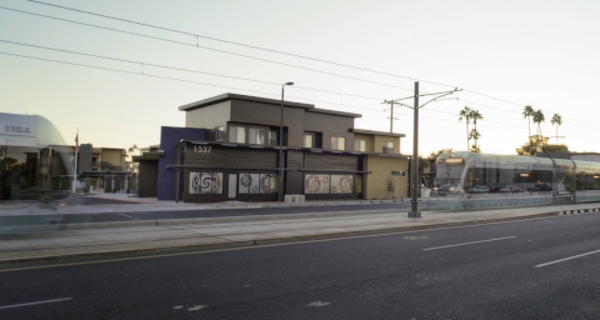
(This article is part of a LISC Phoenix series, “Communities on the LIne.” Photo by Mark Lipczynski Photography.)
For city, state, and federal housing leaders, Camelback Pointe is part of a regional effort to end chronic homelessness. The 54-unit apartment complex has a single-person focus and on-site case managers and resident service specialists to address an array of needs.
For developer Native American Connections (NAC), the $13 million complex in the West Camelback Road commercial corridor represents an evolution of its groundbreaking permanent supportive housing work, combining the Housing First service model with transit-oriented development principles.
For urban renewal advocates, Camelback Pointe, a LEED Platinum certified development, is an example of converting a nuisance property into an architecturally clean community asset. It replaces an abandoned fast food restaurant site that had become a problem property, and now has an engaging, neighborhood-focused owner (NAC) who will have a 24/7 presence at the secure-community site.
But for its new residents, Camelback Pointe is simply and powerfully one thing: Home.
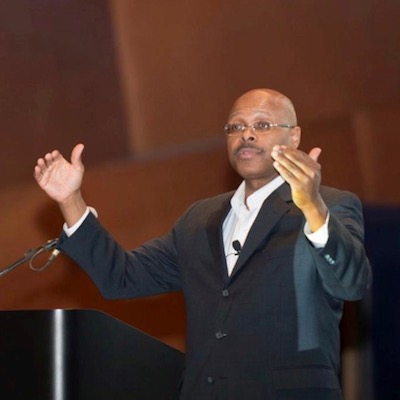 LISC and its partners are experts in the business of comprehensive economic development. Maurice Jones, president and CEO of LISC, said the success stories in the Phoenix area and throughout the nation leave no doubt about that.
LISC and its partners are experts in the business of comprehensive economic development. Maurice Jones, president and CEO of LISC, said the success stories in the Phoenix area and throughout the nation leave no doubt about that.
They’ve done the heavy lifting of revitalizing neighborhoods and forging healthy, sustainable communities. They’ve flashed genius in leveraging tools and resources for initiatives that create place, spur small-business activity and strengthen the local workforce.
But on Nov. 1, Jones used the occasion of the LISC Phoenix annual celebration of exemplary work in community development to talk about failure — specifically the effort needed to push toward a higher-degree of success with deeper meaning. Don’t lose sight of humanity in community development work, Jones said in urging leaders to look for the faces of loved ones in serving people in need.
“Sometimes in our work we get caught up in what’s the capital stack that we need, where does philanthropy play, where do banks play, where does local government play, where do we play,” Jones said. “The real issue is do I see the face of my daughter in that homeless guy. …The most important muscle in the work that we’re talking about now is the heart. It’s not the other stuff. We know how to do it. It’s whether we have the heart to do it.”
Jones was the featured guest at the 2017 LISC Phoenix annual breakfast at the Mesa Arts Center. More than 200 attended the celebration that honored Mountain Park Health Center – Tempe Clinic as an exemplary project; Nordstrom Bank as an exemplary partner and Phoenix Indian School Visitor Center as an exemplary collaborative.
Mesa Mayor John Giles expressed gratitude for LISC Phoenix’s work, particularly in improving the affordable housing condition in downtown Mesa and growing a strong arts community.
“Thank you for your support,” Giles said to LISC. “Thank you for helping us create places in our communities that are the hub of people and business and in the way we interject new economy, sometimes in old buildings. It’s exactly what my community needs and each of the communities that you serve so well.”
Jones said LISC has a particular interest in the Phoenix area for building more commercial corridors, helping individuals get prepared for the work that exists in the region, facilitating entrepreneur and small-business endeavors and “really investing in this robust arts community here, leveraging it for both creating place but also creating jobs.”
In addition to urging a recommitment to moving people’s hearts to maintain momentum on effective community development work, Jones said it’s important to have a solid partnerships across many sectors that can confidently navigate the ups and downs of pursuing strategic goals.
“For the work we do, the most important thing is heart and high-functioning team,” Jones said. “That combination gets us across the finish line every time.”

The president and CEO of LISC, a champion of inclusive economic development, was the featured guest at the LISC Phoenix annual breakfast and awards ceremony on Nov. 1.
“Sometimes in our work we get caught up in what’s the capital stack that we need, where does philanthropy play, where do banks play, where does local government play, where do we play,” Maurice Jones said. “The real issue is do I see the face of my daughter in that homeless guy. …The most important muscle in the work that we’re talking about now is the heart. It’s not the other stuff. We know how to do it. It’s whether we have the heart to do it.”
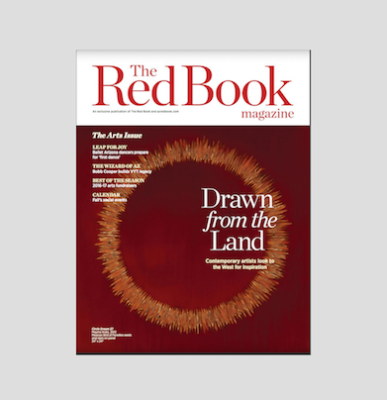
The Red Book, a resource for those involved in the social and philanthropic community, and azredbook.com launched a new magazine. The Red Book Magazine will have a single focus. The premier issue published in September 2017 focused on the arts. JDD Specialties was honored to write a feature, “Leap for Joy,” for the first issue of The Red Book Magazine
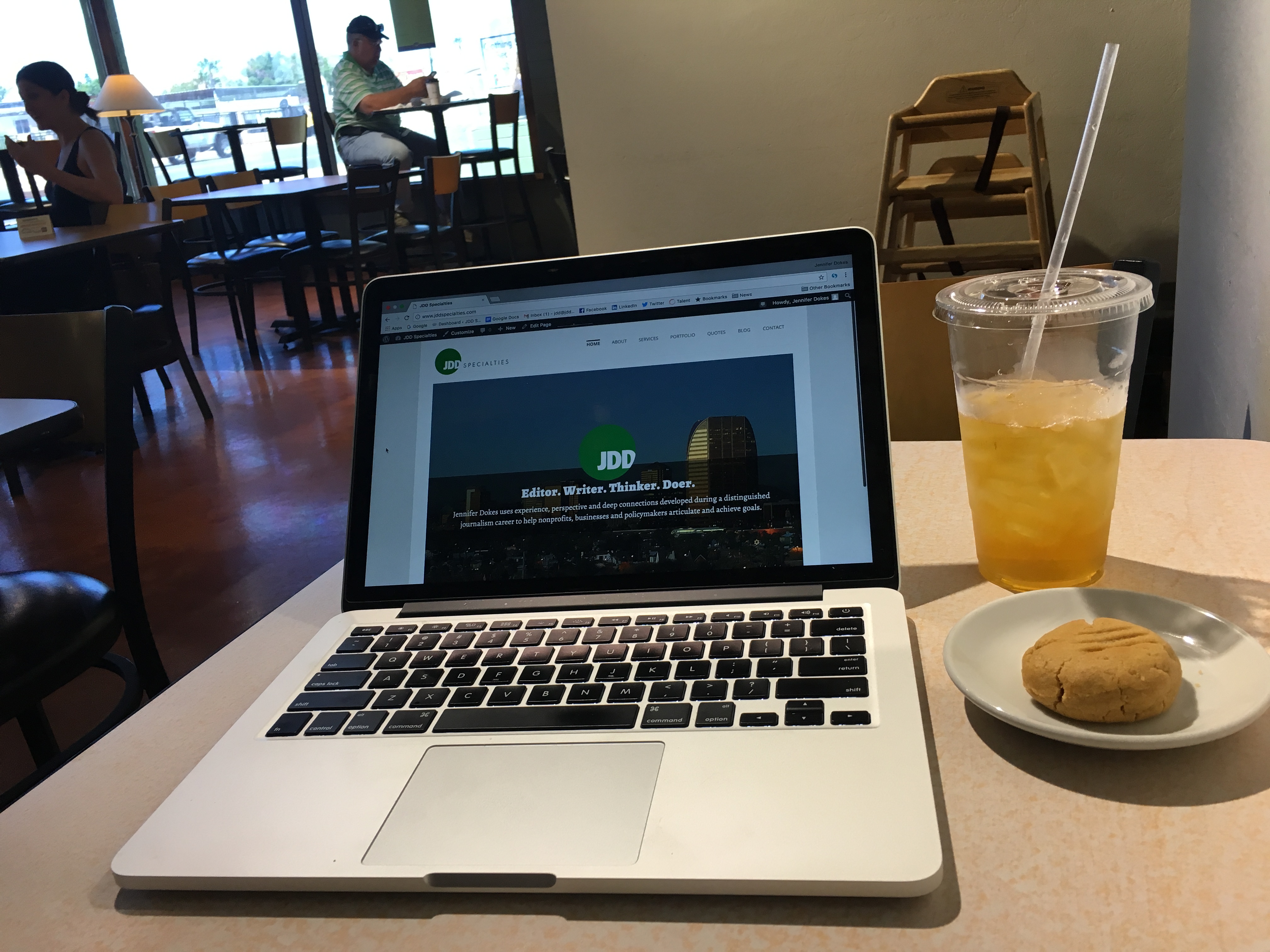 Coffee shops are an integral part of a city’s connective tissue. I like their place in my world. Highlights of just the past few days:
Coffee shops are an integral part of a city’s connective tissue. I like their place in my world. Highlights of just the past few days:
Giant Coffee: The mayor is there. He asks me if I miss daily journalism. (That’s an emphatic, “NO!”) I tell him it’s good to see him out and about. He says it’s better than staying inside Phoenix City Hall. He dashes off, in that trademark way he comes and goes. He left me me wondering where his next political home will be, but not in a political junkie way. It was more personal.
The Refuge: That’s the site of a business meeting with someone who is the wind beneath powerful wings. There’s lots to discuss about a long-term project that could revolutionize the way we help people in need, how we make our communities stronger. But first things first: We take our time catching up on family news. She’s wearing a sharp, black dress, heels and pearls. I’m in a shirt, jeans and flats. We’re both in appropriate work attire to handle the business before us. That’s just how we roll in Phoenix.
First Draft: Even when I’m not there, I’m there. While at the gym, I get a text from a dynamo who I’m counting on to win the most interesting Arizona legislative race in 2018. She’s at Changing Hands bookstore where we’ve bumped into each other a couple of times when I’m working out of the adjacent First Draft. It’s to the point where she expects to see me every time she’s at the bookstore. I like that connection.
None of this happens without the excuse to drink coffee and tea and to be in interesting places. Coffee shops make you feel like the world is small and intimate, but they are also places that help you keep the big picture in sharp focus. There’s a certain magic in all of that.
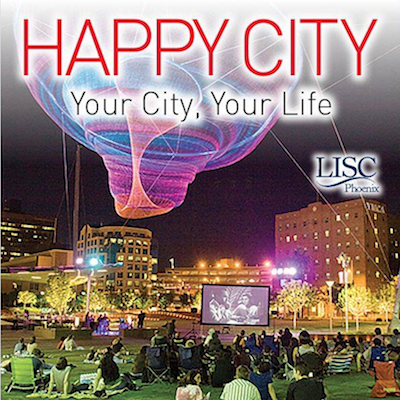
JDD Specialties has expertise writing about community development, urban design and sustainable communities. An article for LISC Phoenix that recaps “Happy City” author Charles Montgomery’s May 2017 visit to the Valley of the Sun is an example of that work.
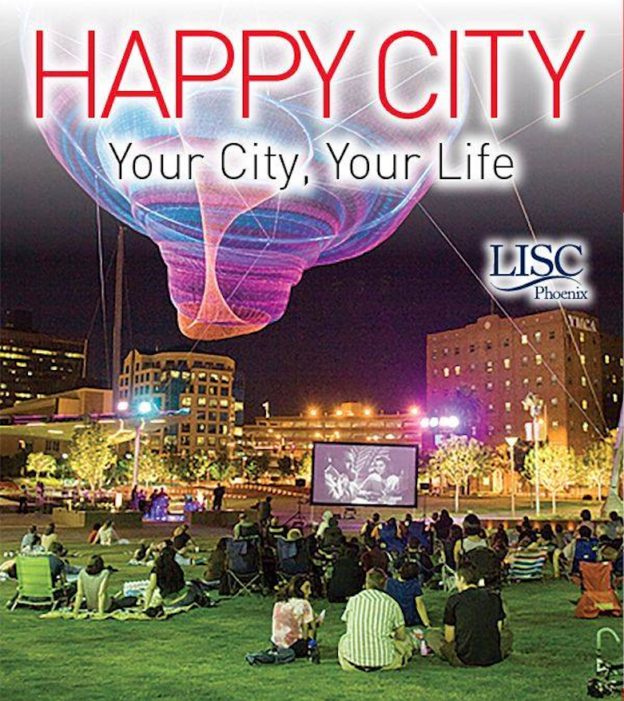
(Editor’s note: This blog is part of a LISC Phoenix monthly series, Communities on the Line.)
The Phoenix metropolitan area has a world-class freeway system and wide arterial streets laid out in a marvelous grid pattern to move people around and within a vast, car-dependent region. Residents can’t be happy.
Seriously. Neuropsychology, sociology and public health lessons about happiness tell us what we’ve done over 30 years to build communities and move cars in the region generally is at odds with creating environments for widespread personal satisfaction.
Urban design patterns throughout greater Phoenix discourage social connections vital to the desired human condition we call happiness or well-being, urbanist Charles Montgomery said during a recent visit. A growing body of scientific research tells us unhappiness invites social, health and economic miseries that stifle individual and community prosperity, he said.
“Cities really do make or break our well-being in their systems, through architecture, through public space,” Montgomery said. “They change how we feel, they change how we move and they change how we treat other people in ways most of us don’t even realize.”
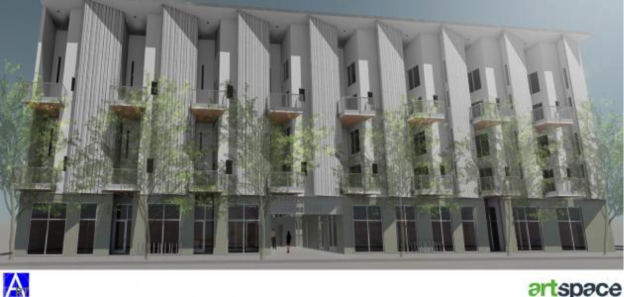
(Editor’s note: This blog is part of a LISC Phoenix monthly series, Communities on the Line. The illustration is an artist rendering of Mesa Artspace Lofts.)
In July 2015, business leaders, community development experts, arts advocates and city officials took a bus tour of a downtown Mesa area transformed by creative placemaking and transit-oriented development. John C. Williams, president of the Federal Reserve Bank of San Francisco and Mesa Mayor John Giles was among them.
Tour stops highlighted strengths and challenges. Just south of Main Street, Giles pointed to a large, vacant lot where he hoped to see an affordable housing project built by Artspace, a nationally known developer of projects that support artists. “It has potential,” Williams quipped, as if assessing a fixer-upper. “Yes, it has good bones,” Giles replied, not missing a beat.
Mesa Artspace Lofts, a 50-unit, live-work apartment complex built especially for artists, had a ceremonial groundbreaking today (May 24). The permanent affordable housing complex at 155 S. Hibbert St. will have good bones. It’s also a transit-oriented development that will strengthen the beating heart of a disconnected neighborhood near the Valley Metro light-rail corridor.
Note: This blog is an installment of the LISC Phoenix monthly series, “Communities on the Line.”
The area near the Park-n-Ride lot at 19th Avenue and Camelback Road is one of the most ethnically rich, culturally diverse parts of Phoenix. It has been for decades, largely because of a large concentration of immigrants, including refugees who are part of resettlement programs.
It is one thing to find shelter. It is another thing for refugees and immigrants far removed from the life and culture they knew to earn a living that affords the coveted American dream.
But that, too, is happening in neighborhoods near the Park-n-Ride at the Valley Metro light-rail stop at 19th Avenue and Camelback Road. Organizations like the International Rescue Committee and Local First Arizona support a growing microenterprise business community among Phoenix immigrants and refugees. Many of the small businesses in the area — restaurants, a deli, barber shops, a clothing store — are owned by refugees who became U.S. citizens.
See for yourself what’s happening in the neighborhood. On May 6, the third World Bazaar and Phoenix Community Market at the Park-n-Ride lot will offer food, crafts and entertainment that reflect the cultures hidden in plain view in Phoenix. The free, family-friendly event is from 10 a.m. to 2 p.m.
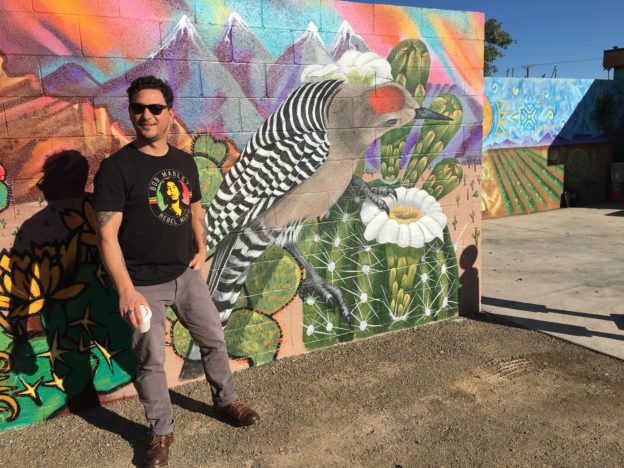
(Note: This blog is an installment of the LISC Phoenix monthly series, “Communities on the Line.”)
On a sunny March afternoon in downtown Mesa, a rooster’s call is louder than a light-rail train’s toots, a retiree tends a plot of an urban garden wrapped in local artists’ murals, and a party of four repeat customers talks shop during a meal at a restaurant with Mesa roots running deeper than the business planted there four years ago.
Welcome to LISC-style economic development. The nonprofit’s focus on small business, transit-oriented development and creative placemaking to help build community are on full display at the Southside Heights commercial corner that is home to the popular República Empanada restaurant and the Mesa Urban Garden.
The northeast corner of First Avenue and Hibbert Street, just south of Main Street, is also an example of an effective “survive and thrive” community development strategy to help neighborhoods through the disruption of Valley Metro light-rail construction.
“Community development is community building,” said Terry Benelli, executive director of LISC Phoenix. “You accomplish that by building trust with residents and businesses of the neighborhood. I’m really proud of how things happened.”
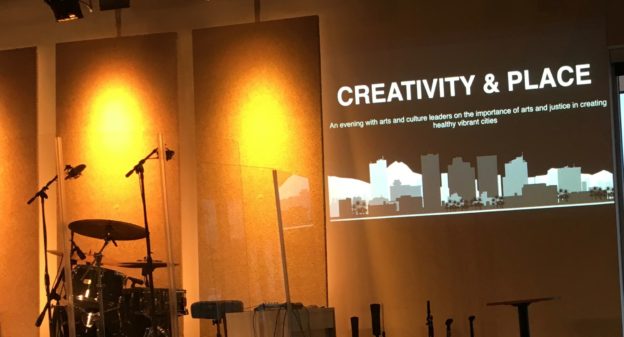
(Note: This blog is part of ongoing work on behalf of LISC Phoenix to underscore the importance of comprehensive community development strategies.)
South Phoenix is “ground zero” for a comprehensive community development strategy that makes art and social justice important parts of neighborhood revitalization. What that means in theory and practice depends on how the table is set and who is seated there, according to a panel of community organizers and urban planning experts.
The panelists at the LISC Phoenix-sponsored event generally agreed that reaping broad-based benefits from arts and justice initiatives requires a commitment to collaboration and a willingness among community development professionals and neighbors to do things differently.

It’s a good day when references to Sisyphus, Machiavelli and John Adams pop up in perfect moments during a short interview. What a departure from the unavoidable social media poison accepted as civic engagement and productive discourse.
Thoughtfulness and community spirit can sprout and grow in the harshest political and social landscapes. Phoenix, in many respects, is such a place. But here’s a riff that warms my heart. It’s by a Valley business leader, who would be considered a conservative in another time and place, discussing one challenge of making Phoenix the healthy, inclusive, resilient place it should be:
“I’m very passionate about a legacy for this community, for my children and my grandchildren to have a cultural economy that feeds the soul of the community but also attracts and retains the kinds of businesses that we need for economic development. It’s critical to our success. And while people will say that with platitude and with words, there is not a lot of action. I’m one of the lone rangers out there just beating the drum. I think I’m like John Adams: I’m obnoxious and disliked about this, but, nonetheless, it’s important. In my world, no is just the beginning of the conversation.”
Word. Right on. Amen.
Getting to “yes” on healthy societal changes requires a long view, steadfastness and commitment.
Persistence.
The resistance language spoken so loudly today in the public square means nothing without persistence. Resistance movements are often spirited are difficult to sustain.
Persistence infused with insistence endures. The most effective change agents have led righteous persistence movements.
Establishing an American society where human values are self-evident is a work in progress. It always has been. The best work on universal goals always has been at the local level — by city block, neighborhood and zip code and by school, city council and legislative districts. An insistence on doing the right thing changes the world around you.
That principled work is harder in some moments than in others. “No” can sound emphatic, and it’s dispiriting. We’re in one of those moments. Persistence pushes us forward on the path to “Yes!”
It’s Friday the 13th and I’m thinking about my incredibly lucky start to what will be one of the most challenging years of our lives. Worries about my nation are allayed by dozens of people who were part of my world during the first weeks of 2017.
A mix of serendipity and intentionality put me in contact with people who understand that strengthening the place where we live helps build a more perfect union. Some of them are adding to their proud legacies. Others are hard workers who are committed to finishing important work they’ve started. Some are just getting started.
Yes we can. Yes we did. Yes we will. Sí, se puede. Indeed.
 The New Year begins with calls to address the fallout of what can fairly be described as the great political earthquake of 2016. Yes, let’s do act with newfound determination to make things better, but let’s also make an investment of time and effort to think before we act.
The New Year begins with calls to address the fallout of what can fairly be described as the great political earthquake of 2016. Yes, let’s do act with newfound determination to make things better, but let’s also make an investment of time and effort to think before we act.
Next week, there are two fantastic opportunities to immerse in thoughtfulness that informs efforts to create the kind of healthy, productive society we want in the Valley. On Tuesday, the Virginia G. Piper Charitable Trust will host an installment of its Thought Leaders Series with a focus on “Advancing Resilience in Arts and Culture: The Value of Cross-Sector Partnerships.” The forum at the Beus Center for Law and Society in downtown Phoenix is open to the public.
As a Piper Trust thought leader, Chris Ronayne, president of University Circle in Cleveland, an innovative square mile of urban development that features universities, hospitals, museums, parks, restaurants and residential spaces, will share lessons learned about creating a resilient community that has become a destination point for living, working and playing.
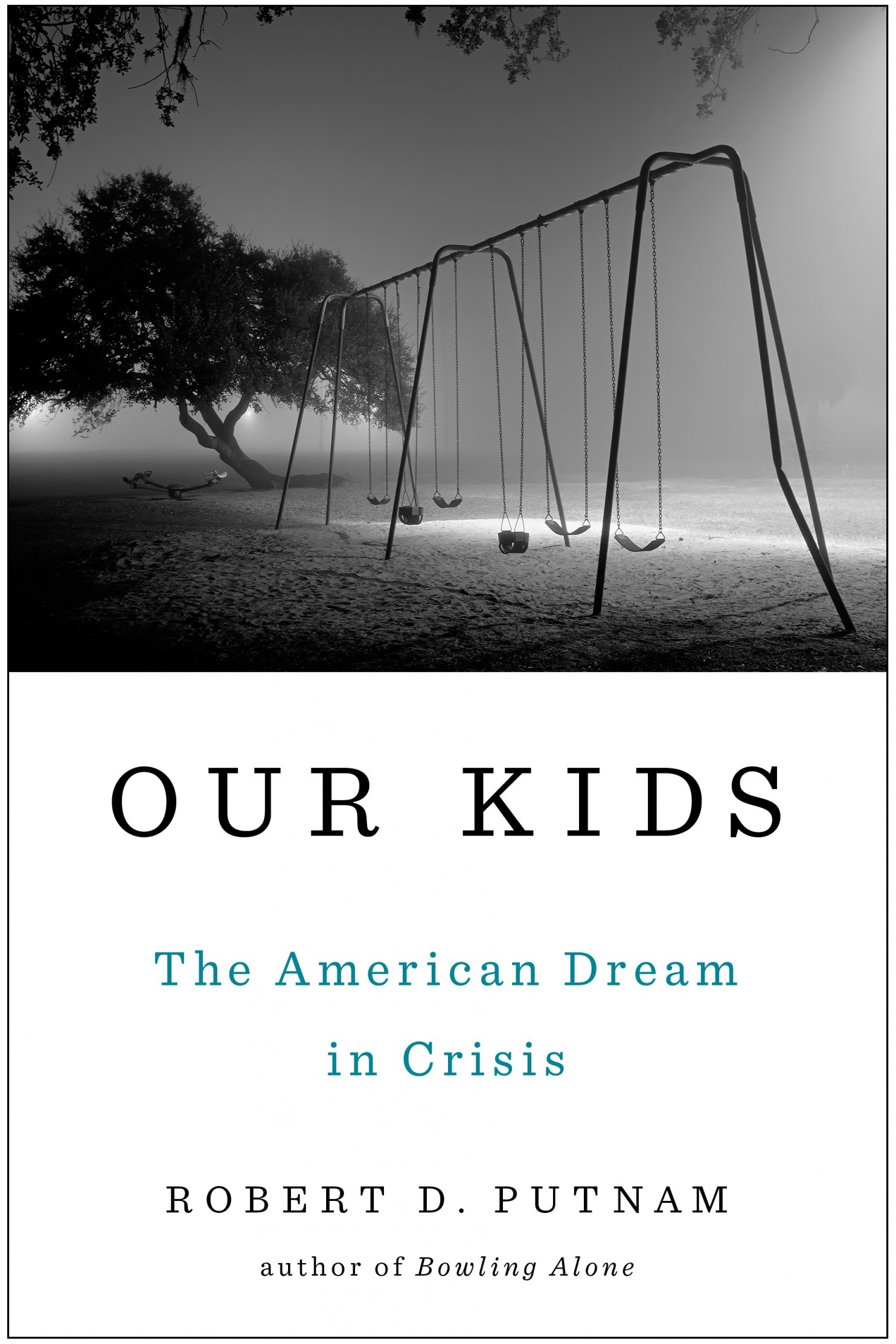 On Thursday at South Mountain Community College, the Arizona Community Foundation, the Center for the Future of Arizona and the Girl Scouts–Arizona Cactus-Pine Council will host a conversation with Robert Putnam, author of the fantastic book Our Kids: The American Dream in Crisis, which dug deeply into the perils of the growing opportunity gap among young people in the United States. The book published in 2015 speaks to the dangers of unequal opportunity, and it proved to be a fascinating precursor to some of what transpired in the national election.
On Thursday at South Mountain Community College, the Arizona Community Foundation, the Center for the Future of Arizona and the Girl Scouts–Arizona Cactus-Pine Council will host a conversation with Robert Putnam, author of the fantastic book Our Kids: The American Dream in Crisis, which dug deeply into the perils of the growing opportunity gap among young people in the United States. The book published in 2015 speaks to the dangers of unequal opportunity, and it proved to be a fascinating precursor to some of what transpired in the national election.
While we ramp up resolve in 2017 to fix what clearly is broken and to protect programs and values we fear are under assault, let’s embrace fundamental change in our approaches to building up society. Let’s listen and learn before we act.

The Be Kind People Project, a Phoenix-based nonprofit organization, launched its national Be Kind America campaign in October 2016. JDD Specialties provided communication support and helped implement the initiative.

“To be persuasive, you have to get the facts right — a no-brainer for you. Details and integrity are the spokes in your wheel. Now you just need to give those facts an emotionally compelling context and you’ll be set. — Horoscope, Aug. 25, 2016
Reading my daily horoscope is a guilty pleasure. A couple of times a year it’s exactly right. Like today.
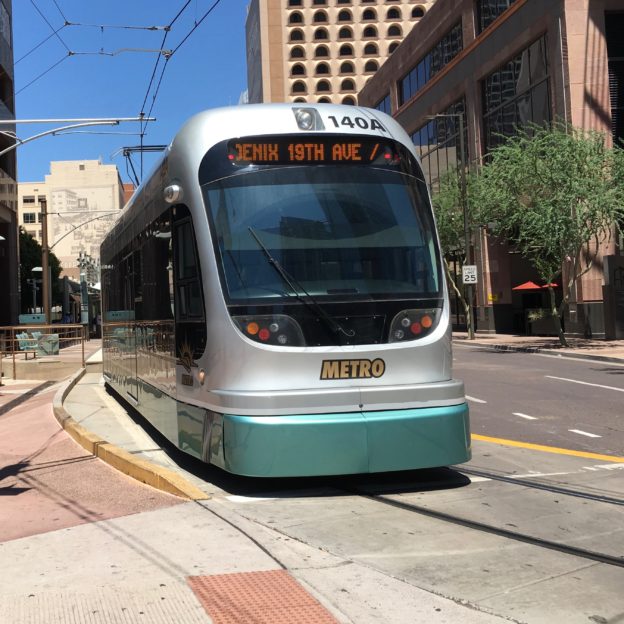
There are many stories to be told about the 5.5 mile South Central Extension of the Valley Metro light-rail system. An article about a Ford Foundation workshop on equitable transit-oriented development (eTOD) for the underserved South Central corridor is the first of many articles JDD Specialties will write about the $700 million public transportation infrastructure project and its impact on residents and businesses.
My list of things I wish I had said grew a lot this week — a week that from start to finish was full of highlights of a world seemingly gone mad. Relief from despair comes from hearing and reading words that struck a chord.
George W. Bush, David Brooks, Charles Cooke and Bryan Stevenson were on point with these gems that make sense and give hope.
 Dallas Police Chief David O. Brown is a profile in courage. He is so grounded in reality. I’ve enjoyed watching him lead. What he said about the impossible demands placed on police officers as quoted in the New York Times is truth in boldface. We have so much work to do.
Dallas Police Chief David O. Brown is a profile in courage. He is so grounded in reality. I’ve enjoyed watching him lead. What he said about the impossible demands placed on police officers as quoted in the New York Times is truth in boldface. We have so much work to do.
“Every societal failure, we put it off on the cops to solve. Not enough mental health funding, let the cop handle it. Not enough drug addiction funding, let’s give it to the cops. Here in Dallas we got a loose dog problem. Let’s have the cops chase loose dogs. Schools fail, give it to the cops. Seventy percent of the African-American community is being raised by single women. Let’s give it to the cops to solve that as well.”
“Policing was never meant to solve all those problems,” he said.
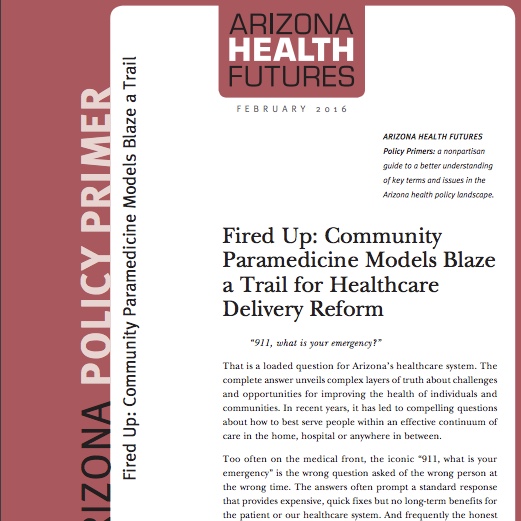 Community paramedicine could revolutionize the business of healthcare delivery in Arizona. Several Arizona communities have launched fire service-based community paramedicine programs. Mesa has the largest, most developed program and is tackling thorny issues that address the viability of community paramedicine.
Community paramedicine could revolutionize the business of healthcare delivery in Arizona. Several Arizona communities have launched fire service-based community paramedicine programs. Mesa has the largest, most developed program and is tackling thorny issues that address the viability of community paramedicine.
This recent Arizona Republic article explains the billing and reimbursement issues that are key to program financial sustainability.
A Vitalyst Health Foundation policy primer, written by JDD Specialties, provides an overview of the community paramedicine component of mobile integrated healthcare in Arizona and highlights six fire-service based programs. Vitalyst will profile at least six additional community paramedicine programs this year.
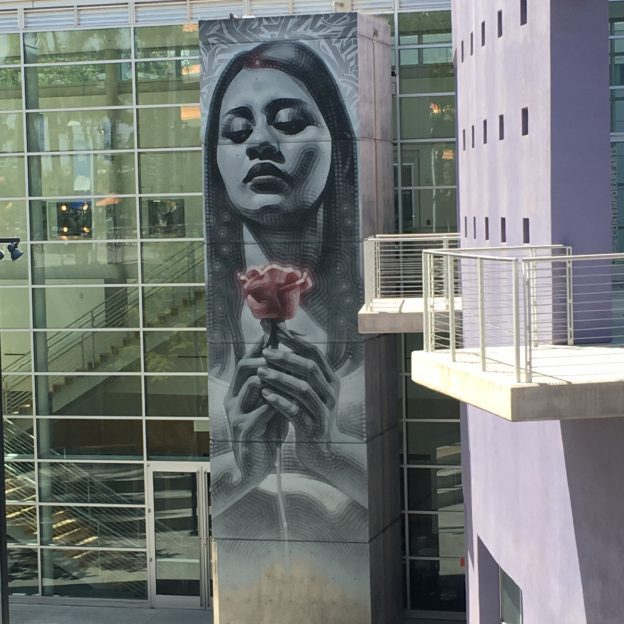
There’s more to arts and culture in community redevelopment than meets the eye. Arts and culture can be an anchor in economic development strategies and a significant component of urban revitalization.
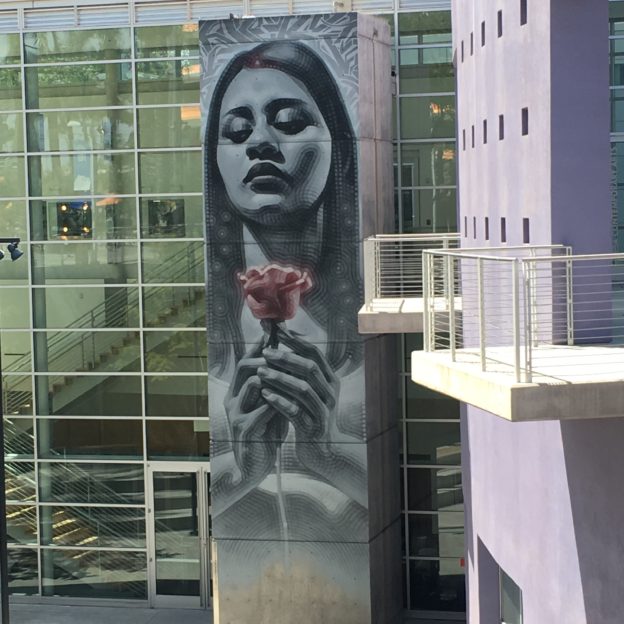
The arts and culture component in comprehensive community development is more than a pop of color in a housing project or a hint of traditional neighborhood vibe. Individual and group stability, civic leadership, creative problem-solving, and hope all spring from intentional efforts to instill arts and culture in community revitalization.
The considered opinion of a panel of experts discussing creative placemaking at an April 6 event in Mesa made clear there is more to arts and culture in community development than meets the eye.
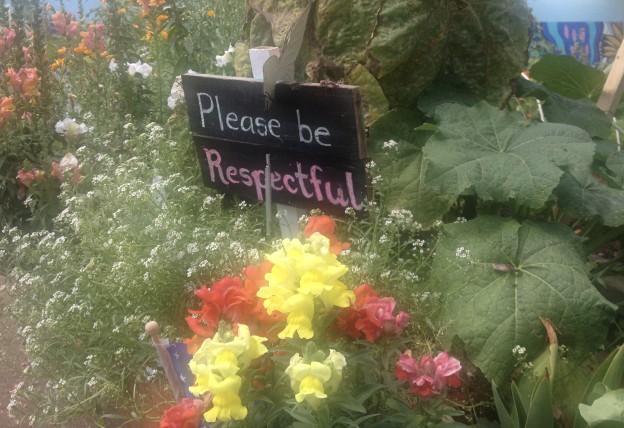
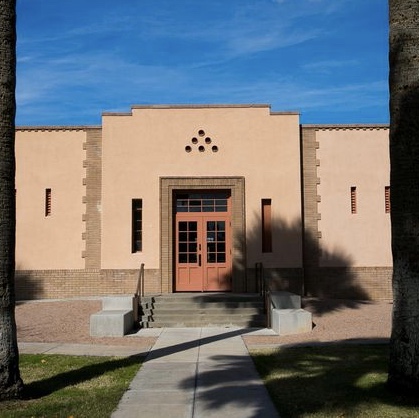
(Written by JDD Specialties for Terry Benelli, executive director of LISC Phoenix.)
Eskwel uma angkyahkya LISC.
“Thank you, it’s good you all came here today to the LISC event,” White Spider Girl said in Hopi language. What followed her greeting at a March 22 gathering of LISC executive directors in downtown Phoenix was a brief, compelling account in English of the 99-year history of the Phoenix Indian School site three miles away.
At the end of the boarding school story of tragedy and triumph, White Spider Girl, also known as Patty Talahongva, community development manager at Native American Connections, smiled and said she wished she had a drum roll for the exciting news she would share publicly for the first time: City-financed construction begins immediately to restore the historic Phoenix Indian School music building. Native culture will activate the public space in the spring of 2017.
Expect drumming and so much more.
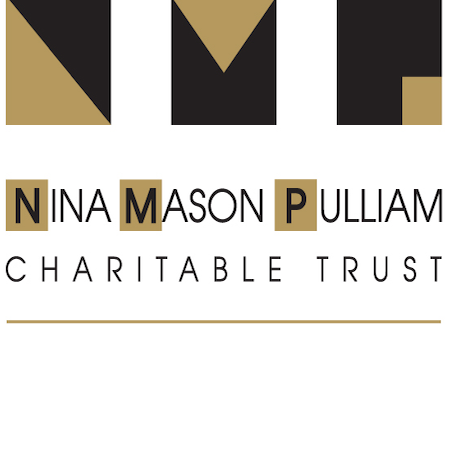
In 2016, the Nina Mason Pulliam Charitable Trust joined the list of satisfied JDD Specialties’ clients. The trust uses JDD Specialties as an independent contractor for writing, including news releases and guest columns.
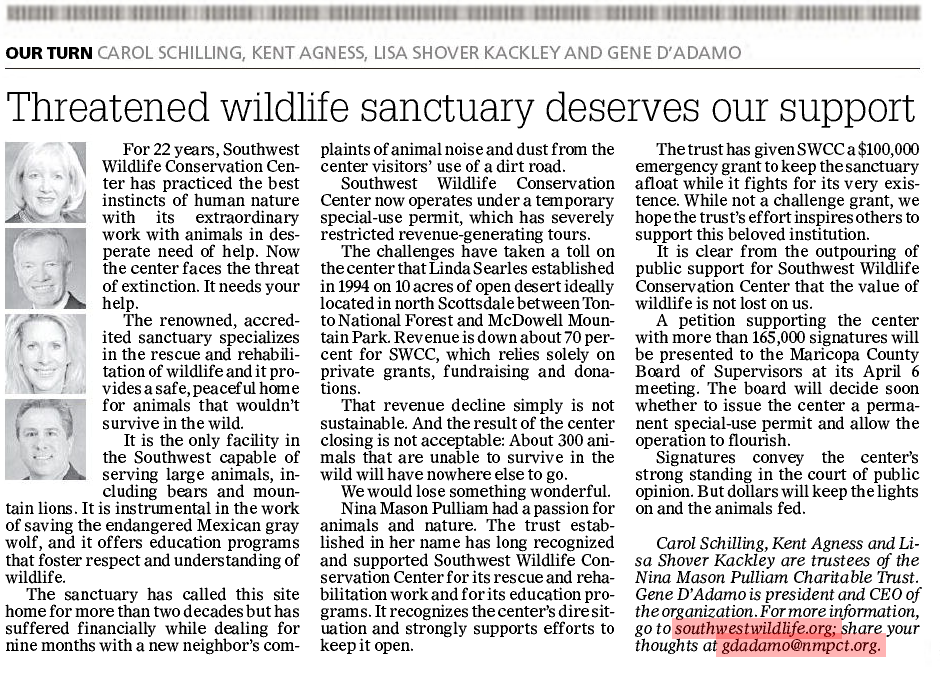

JDD Specialties helped the Nina Mason Pulliam Charitable Trust with a multipronged effort to promote public support for the Southwest Wildlife Conservation Center whose 22-year existence is threatened by a new neighbor’s complaints. Preserving endangered Mexican gray wolves is among the accredited sanctuary’s noble deeds. JDD Specialties wrote the Pulliam Trust news release that informed media coverage of the issue; a guest column that provided some inspiration for an editorial and an “advertorial” that encouraged donations to the center.(Photo by Southwest Wildlife Conservation Center.)

LISC Phoenix was among the early supporters of a plan to turn the historic music building at Steele Indian School Park into a Native American cultural center. LISC Phoenix executive director Terry Benelli said the renovated center could be one of the region’s best examples of creative placemaking with cultural emphasis.

JDD Specialties applies journalism skills to help clients explain complex issues, such as this Vitalyst Health Foundation policy primer on the community paramedicine component of mobile integrated healthcare. The February 2016 report required interviews with several leaders of Arizona fire departments and districts. Additional profiles on Arizona fire-service based community paramedicine programs will be posted on the Vitalyst website.
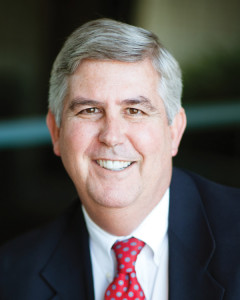 Developers are following John Graham’s lead in urban development. Central Phoenix is booming because of it.
Developers are following John Graham’s lead in urban development. Central Phoenix is booming because of it.
Graham was the featured guest at the recent annual LISC Phoenix Annual Breakfast and Community Awards. Here’s my recap of the breakfast:
Longtime business leader John Graham developed a compulsive interest in urban infill development on opening day of the Phoenix area’s light-rail system in 2008. At that time, sprawling, greenfield suburban projects highlighted his real-estate company’s portfolio.
“What I noticed during that one ride was how much available land there is,” Graham said at the 2015 LISC Phoenix Annual Breakfast and Community Awards celebration. “As a developer, pathologically, it makes me drool a little bit figuring out what to do with it.”

JDD Specialties facilitates discussions of key issues of the day. For example, founder Jennifer Dokes was the moderator for an Arizona School Boards Association discussion with thought leaders about the nexus between education equity and Arizona’s future.
The Arizona Republic editorial board recently published its showcase of interesting or influential people to watch in the new year. It’s a fun exercise and an annual conversation/argument starter.
I understand the selections for the 16 Arizonans to watch in 2016. They make sense from an editorial board perspective. But as an Arizonan looking for clear-eyed, innovative leaders, I felt uninspired and a bit despondent after reading the list.
I searched for something better from my perspective, not the editorial board’s perspective, and came up with a list of people I believe will make 2016 interesting for a lot of right reasons. Here are the Arizonans I’m watching in 2016:
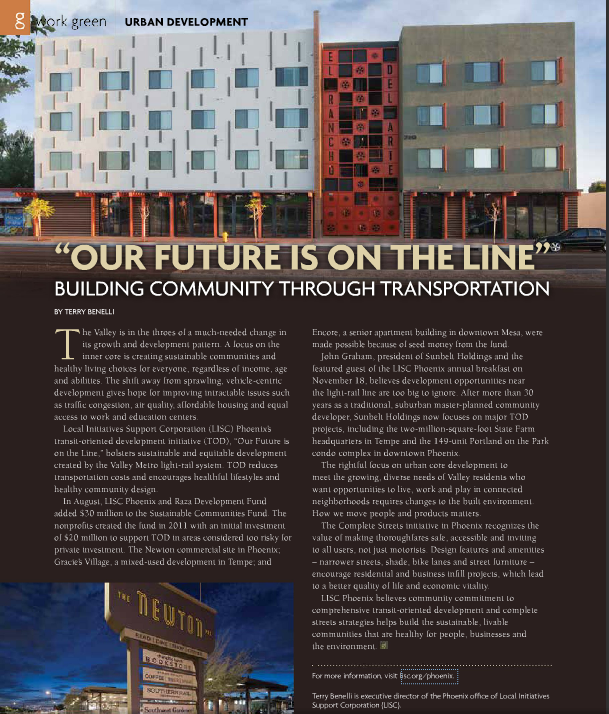
LISC Phoenix executive director Terry Benelli is determined to spread the news about the nonprofit’s work in revitalizing underserved neighborhoods. I like helping her do that.
This article in the new issue of Green Living Magazine ( http://bit.ly/1kJiByS ) tees up the LISC Phoenix annual celebration and awards breakfast on Nov. 18 at the Phoenix Art Museum. John Graham, president and CEO of Sunbelt Holdings, is the featured guest. http://bit.ly/1Y1ViyW
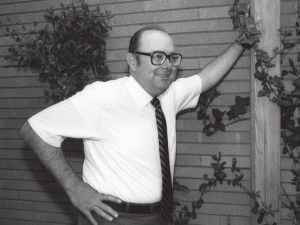 I’m expecting to be hit with a heavy dose of nostalgia tonight at former Arizona Republic editorial board colleague Kathleen Ingley’s book event at the central Phoenix public library.
I’m expecting to be hit with a heavy dose of nostalgia tonight at former Arizona Republic editorial board colleague Kathleen Ingley’s book event at the central Phoenix public library.
Kathleen’s telling of the Jack Pfister story is a lesson plan for civic, business and political leaders on how to focus on what’s important in Arizona and how to accomplish visionary goals. Remember those days? I do. Generally speaking, leaders in power today are far removed from the spirit and purpose of the Jack Pfister  days. And we have a messes everywhere that show it.
days. And we have a messes everywhere that show it.
Former legendary lawmaker Art Hamilton, and former ASU president Lattie Coor, two fine gentlemen who led by example, will be among the panelists with Kathleen discussing the life and influence of Jack Pfister. (Kathleen teed up the book and the event with this Viewpoints column.
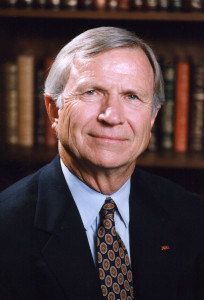 Art and Lattie talking about Jack at the library named for Burton Barr, another legendary leader. Yeah. My date with nostalgia is at 6:30.
Art and Lattie talking about Jack at the library named for Burton Barr, another legendary leader. Yeah. My date with nostalgia is at 6:30.
Tommy Espinoza makes the most of things, whether it’s investing capital or seizing moments. The Valley is better for it.
The Arizona native packed a lot into the five minutes he had Friday to wrap up the big announcement that Raza Development Fund and LISC Phoenix boosted their equal partnership in the Sustainable Communities Transit-Oriented Development Fund by $30 million. In 2011, the partnership put an initial $20 million into the transit-oriented development fund.
U.S. Transportation Secretary Anthony Foxx, Phoenix Mayor Greg Stanton and other dignitaries were on hand to hear Espinoza, president and CEO of Raza Development Fund, speak from the heart about Phoenix, the Latino community and low-income families. He was on point when he said, “Community development is about building up families, not building up buildings.” His riff on social, business and political leadership included a play on the highly charged words “anchor babies.” (Yep, he went there.)
 I’m sure fine speeches were delivered Saturday at the opening of the light-rail extension in to downtown Mesa. But the candid, cute comments Mesa Mayor John Giles gave Friday at the announcement that LISC Phoenix and Raza Development Fund will add $30 million dollars to a transit-oriented development fund for projects along the Valley Metro light-rail route are worth sharing for their insights about downtown Mesa’s history and the success of light rail.
I’m sure fine speeches were delivered Saturday at the opening of the light-rail extension in to downtown Mesa. But the candid, cute comments Mesa Mayor John Giles gave Friday at the announcement that LISC Phoenix and Raza Development Fund will add $30 million dollars to a transit-oriented development fund for projects along the Valley Metro light-rail route are worth sharing for their insights about downtown Mesa’s history and the success of light rail.
U.S. Transportation Secretary Anthony Foxx and Phoenix Mayor Greg Stanton also delivered remarks at the announcement, which kicked off a flurry of transit-related activities in the Valley over a few days. The three-mile extension of light-rail through downtown Mesa opened Saturday. On Tuesday, Phoenix voters will decide the fate of the Proposition 104 transit tax, which in part, expands the light-rail system.
Here are excerpts from Giles’ comments:
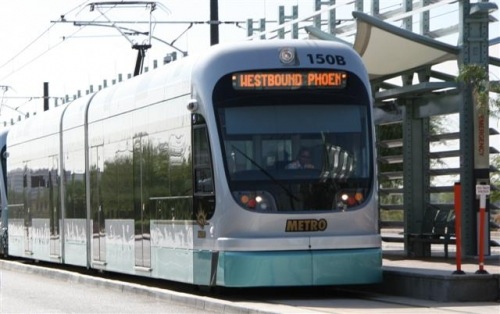
 U.S. Secretary of Transportation Anthony Foxx will join leaders of Phoenix, Tempe and Mesa for an announcement today about LISC Phoenix and Raza Development Fund adding $30 million to a pool of transit-oriented development investment money.
U.S. Secretary of Transportation Anthony Foxx will join leaders of Phoenix, Tempe and Mesa for an announcement today about LISC Phoenix and Raza Development Fund adding $30 million to a pool of transit-oriented development investment money.
In 2011, LISC Phoenix and Raza Development Fund created a $20 million transit-oriented investment fund to that has helped create more than 2,000 units of affordable housing and 205,000 square feet of retail and community space. The fund leveraged $387 million in total investment activity. The additional $30 million in the investment fund will build on that success.
Some of the projects built with support of the fund include The Newton commercial project near Central Avenue and Camelback Road in Phoenix, the Gracie’s Village mixed-used development in Tempe and the Encore mid-rise senior housing project in downtown Mesa.
Secretary Foxx’s visit comes the day before the opening of the Metro light-rail extension in downtown Mesa and four days before Phoenix voters decide the fate of the Proposition 104 transit tax.
 I grew up 15 years ago today, the final day of watching Dad die. Until then, I was just going through the motions of adulthood.
I grew up 15 years ago today, the final day of watching Dad die. Until then, I was just going through the motions of adulthood.
Death made life real. It shook up my thinking about what I thought was important and worth chasing. Clarity of purpose brought calmness and strength.
Losing Dad hurt like nothing I experienced before or after. But 15 years later, I know that one of the greatest gifts from that experience was losing my fear of death. Life is easier when you’re not afraid to die.
Below is a Thanksgiving column I wrote about Dad in 2000, when I was still struggling to fully understand what losing him meant to my family. I’m still figuring that out.
Should Phoenix exist? What a dangerous question. I love it.
Zócalo Public Square and the ASU College of Public Service and Community Solutions launch a community conversation with the “Should Phoenix Exist?” prompt. The event June 2 at the Heard Museum features former Phoenix Mayor Terry Goddard and New York University professor Andrew Needham, author of “Power Lines: Phoenix and the Making of the Modern Southwest” and Sarah Porter, director of the Kyl Center for Water Policy at the ASU Morrison Institute.
“Make it snappy” takes on new meaning when writing “Quick Hits,” brief comments by Arizona Republic editorial board members featured at the top of the Opinions page. You must reach a point quickly and it has to pop.
Here is a sample of what I said in 2014.
Grand Avenue (U.S. 60 on the map) has challenges and potential so large it shouldn’t be ignored. It deserves more attention than it gets and probably more public resources than are available. A recent Republic article describes its current condition. An editorial I wrote in 2012 (below) has some of the hopeful attitude I still hold for it today.